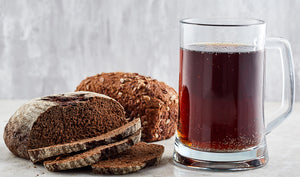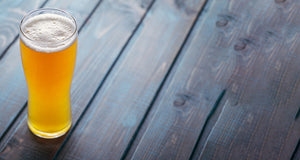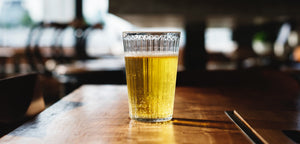Country of Origin

History
The English Bitter can be tracked back to the 1600's when coke (a fuel with a high carbon content) was discovered and began being used to malt grains. Before this, grains were roasted with wood and peat which resulted in varying degrees of a smokiness and darker colour. Using coke created lighter malts. These lighter malts allowed brewers to create what we now refer to as "pale ale", a term that would soon cover a range of beers from IPAs to bitters.
English Bitters as we know them now became popular with an increase of brewers in Burton on Trent, an industrial town in East Staffordshire, England. The water in this area was unusually high in calcium sulfate which created a crisp, clean flavour. This mineral also helped create a rich hop flavour as well.
English Bitters are classified as Ordinary, Best and Extra Special based on the strength (ABV) of the beer, usually between 4 - 7%.
Profile
English Bitter is a copper colour, with high clarity. It has a low white head due to lower carbonation. Notes of caramel and biscuit should shine through, balanced with a moderate hop bitterness. Stronger bitters can carry some alcohol warmth, but most are mild and easy drinking.
Serving
Traditionally English Bitter is served in a 20 oz. nonic pint. However it is not uncommon to see this brew served in a shaker pint across the pond in America. Serve at 45 - 50 °F (7 - 10 °C).
Food Pairing
English Bitter pairs well with traditional British pub fare - the perfect companion for fish & chips (and even great to use in the batter), and great next to bangers & mash. A slightly less common pairing, but just as great, is enjoying an English Bitter with cheese. Mild cheddar works great, and Parmigiano-Reggiano adds an extra nutty kick to the pairing.



- Use British pale malt. The backbone of an English Bitter is the British malts used. British pale malt adds a nice biscuit flavour to the beer, something that American 2-Row or pale lacks.
- Keep it to British hops. Like your grain bill, a proper English Bitter uses British hops. Popular ones for this style are Fuggle, EKG and Northern Brewer. You can use American hops, but be careful - don't allow the hops to overtake the maltiness of this brew.
- Treat your water. Purists believe Burton on Trent water is what truly makes an English Bitter. However, homebrewers can't just have that water delivered, so some minor water treatment can help make your English Bitter close to the traditional version. Some options: Get a water mineral content analysis done for your home water and work from there. Use purified water and manually add minerals. Or, if you're not ready to jump into water profiles and chemistry brew your English Bitter with your regular water to see what results you get and go from there.
Want to brew your own English Bitter?
Try BrewHQ's English Bitter or Extra Special Bitter Recipe Kit.
For something a little lighter, try Rob & Erik's (Not So Ordinary) Bitter Recipe Kit.
For reference, the Burton on Trent water profile:
| Ca2+ | Mg2+ | Na+ | Cl- | SO42- | HCO3- |
|---|---|---|---|---|---|
| 270 | 41 | 113 | 85 | 720 | 270 |



